J.C.M. Warnsinck (11 November 1882, Hoogwoud, North Holland - 21 July 1943, The Hague) was a Dutch naval officer and naval historian.
Johan Carel Marinus Warnsinck was the son of the notary Cornelis Warnsinck and his wife, Tettje Halbertsma. He entered the Royal Naval Academy at Den Helder in 1899 and was commissioned an officer in the Royal Netherlands Navy in 1903, eventually rising to the rank of captain in 1930. In 1919, he married Catarina Elisabeth Delprat and they had one son and a daughter.
He saw naval service in the East and West Indies as well as in European waters. In the Royal Netherlands Navy, he was a hydrographic specialist. From about 1920, he began to be interested in naval history and began with a special interest in the three Anglo-Dutch wars (1652-1674). He retired from active service in 1932 and devoted the remainder of his life to the study of Dutch maritime history. [1]
Warnsinck became a key pioneer for the academic study of maritime history in The Netherlands. In 1933, he was appointed a lecturer at the University of Amsterdam and additionally at Leiden University in 1937. In 1939, he became Professor of Maritime History at Utrecht University. For many years, he was on the Council of the Linschoten Society and Secretary of the Commission for maritime history of the Royal Netherlands Academy of Arts and Sciences. In 1938, he was elected an associate member of the Académie de Marine in Paris. [2]

Lambertus Jacobus Johannes "Bertus" Aafjes was a Dutch poet noteworthy for his poems about resistance to German occupation during World War II.
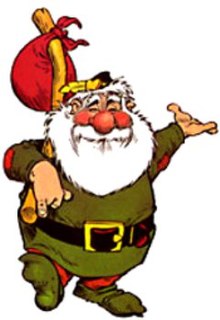
Douwe Dabbert is a Dutch fantasy comics series by artist Piet Wijn and scenarist Thom Roep. It was published in the Netherlands between 1975 and 2001, and in the United States beginning in 2021.
The First expedition to Palembang was a punitive expedition of the Royal Dutch East Indies Army to Palembang in 1819. The expedition ended in a failure for the Dutch.

The second expedition to Palembang was a punitive expedition by the Dutch against the Palembang Sultanate in 1821. The commander of the expedition, Hendrik Merkus de Kock, succeeded in coming to an agreement with Sultan Mahmud Badaruddin II.

The Nias Expedition was a punitive expedition of the Royal Netherlands East Indies Army to Nias at the end of 1855, which, with intervals, lasted until 1864.
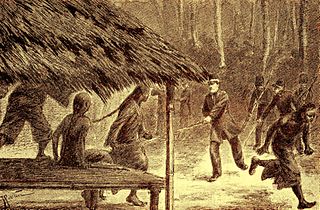
The expedition against the Chinese in Montrado (1854–1855) was a punitive expedition of the Royal Netherlands Indies Army against Chinese independence republic in Montrado (Borneo).

The Expedition to the West Coast of Borneo was a punitive expedition of the Royal Netherlands East Indies Army against the Chinese Indonesian independence republic at Pontianak, Mandor and Monterado in 1823.

The Palembang Bovenlanden Expeditions were punitive expeditions by the Royal Netherlands East Indies Army to Palembang in South Sumatra (1851–1859).

The Pasoemah Expedition was a punitive expedition of the Royal Netherlands East Indies Army to the Pasoemah region in South Sumatra. The expedition lasted from 1864 to 1868.
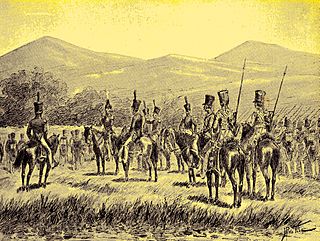
The First Bone War was a series of punitive expeditions of the Royal Netherlands East Indies Army against the Bone state in South Sulawesi in 1824–25.
The Etna expedition (1858) was an early policy-oriented exploration of the then virtually unknown south and north coast of Dutch New Guinea, that can also be regarded as the first Dutch scientific expedition to the main island of New Guinea.
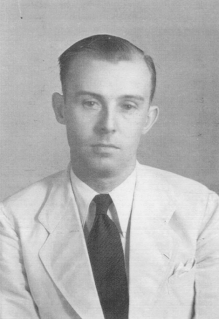
Robert Nieuwenhuys was a Dutch writer of Indo descent. The son of a 'Totok' Dutchman and an Indo-European mother, he and his younger brother Roelof, grew up in Batavia, where his father was the managing director of the renowned Hotel des Indes.

Elizabeth (Beb) Vuyk was a Dutch writer of Indo (Eurasian) descent. Her Indo father was born in the Dutch East Indies and had a mother from Madura, but was ‘repatriated’ to the Netherlands on a very young age. She married into a typically Calvinist Dutch family and lived in the port city of Rotterdam. Vuyk grew up in the Netherlands and went to her father’s land of birth in 1929 at the age of 24. 3 years later she married Fernand de Willigen, a native born Indo that worked in the oil and tea plantations throughout the Indies. They had 2 sons, both born in the Dutch East Indies.
Jacobus Ruurd "Jaap" Bruijn, is one of the best known and respected Dutch maritime historians. He was professor of maritime history at the University of Leiden from 1979 until his retirement in 2003. During his 41-year teaching career as The Netherlands' only university professor of maritime history, he guided the doctoral theses of no fewer than 43 graduate students.

The Bataviaasch Nieuwsblad was one of the leading and largest daily newspapers in the Dutch East Indies. It was based in Batavia on Java, but read throughout the archipelago. It was founded by the famous Dutch newspaperman and author P. A. Daum in 1885 and existed to 1957.

Raden Mas Noto Soeroto (1888-1951) was a Javanese prince from the Jogjakarta noble house of Paku Alaman was a poet and writer of Dutch Indies literature and journalist from the Dutch East Indies. He significantly contributed to the Dutch literary system by exploring new literary themes and focusing on indigenous protagonists, at the same time drawing attention to indigenous culture and the indigenous plight.
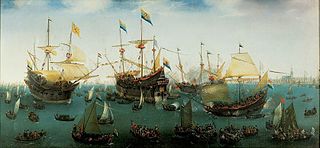
A voorcompagnie (pre-company) is the naming given to the trading companies from the Republic of the Seven United Netherlands that traded in Asia between 1594 and 1602, before they all merged to form the Dutch East India Company (VOC). The pre-companies were financed by merchants from the Northern Netherlands and rich immigrants from the Southern Netherlands. Because of the deadly competition, the government forced the smaller trading companies to unite and form the (United) East India Company, that on its turn received the exclusive rights for the trade with Asia for the following 21 years.

The Compagnie van De Moucheron was a pre-company and precursor of the Verenigde Oost Indische Compagnie from the Republic of the Seven United Netherlands that was founded by Balthazar de Moucheron, a ship owner from Antwerp in the Southern Netherlands. After the fall of Antwerp he moved his business to Zeeland. The fleet of the Compagnie van De Moucheron was made up of three ships, 'Ram', 'Schaap' (Sheep) and the pinasse 'Lam' (Lamb) and was headed by Joris van Spilbergen. Its fleet left on 5 May 1601 and returned to the Republic of the Seven United Netherlands in 1604.

The Veerse Compagnie was a pre-company from the Republic of the Seven United Netherlands that was founded by Balthazar de Moucheron, a ship owner from Antwerp in the Southern Netherlands. After the fall of Antwerp he moved his business to Zeeland. The fleet of the Veerse Compagnie was made up of two ships; 'Leeuw' (Lion) and 'Leeuwin' (Lioness) and was headed by Cornelis Houtman. Its fleet left from Veere on 28 March 1598 and returned to the Republic of the Seven United Netherlands in 1600.